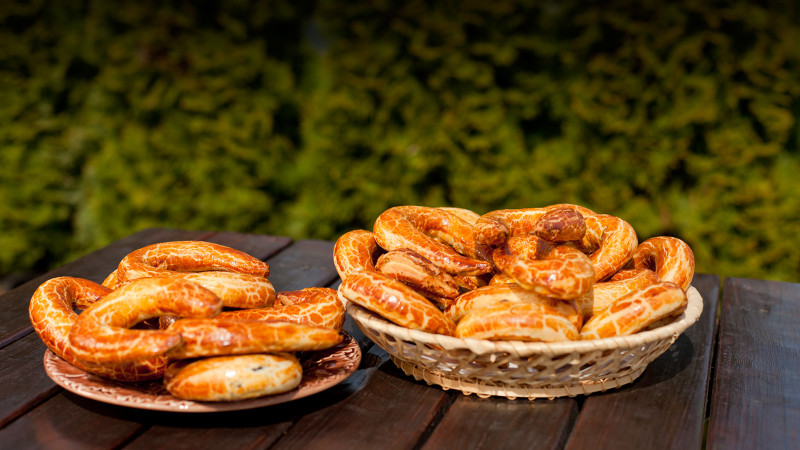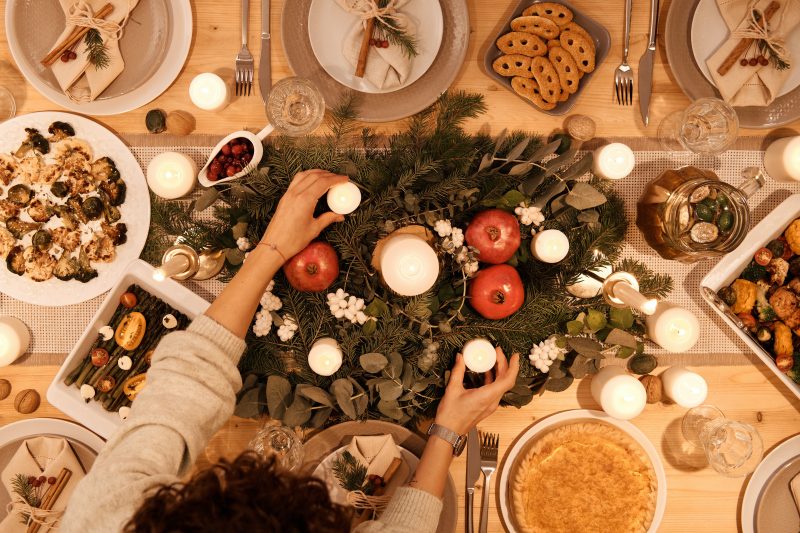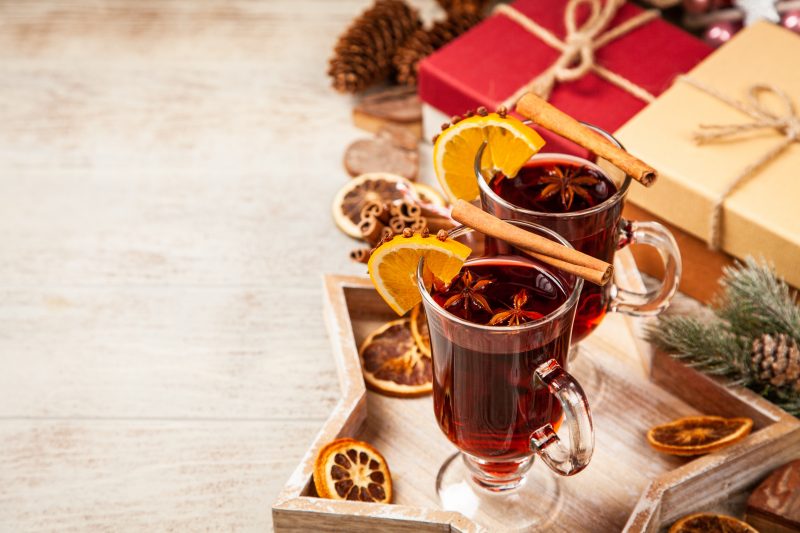Traditional Christmas Bratislava Dishes of Yesteryear
Christmas is all about family, kin, cosy ambience, gifts, and – of course – food! After all, who’s not looking forward to that potato salad, fried fish and Christmas pastries? Do you, however, know what Christmas delicacies decorated the festive table in the past?
Caviar as a Way of Fasting
Although the fast used to be a very important part of the pre-Christmas season, a lot of food would simply be not available in modern time. One of the delicacies during the fast was the snail’s caviar – leave snail’s eggs sitting in water for a month, put the rock salt over it and add some sunflower or poppyseed oil. The caviar was served on a piece of bread with butter or, if you had guests, on boiled eggs neatly cut into halves.
Yet there used to be also another type of caviar in the households of Bratislava in the 2nd half of the 19th century: a special Danube caviar. Regarded as a rather exquisite meal, it was made from the fish found in the Danube, mostly from the beluga sturgeon, which is the largest European freshwater fish. The biggest sturgeon caught here weighed 800 kilo and the caviar could have made up to 15% of its body weight!
Christmas Eve Dinner Menu
A typical Christmas Eve in Bratislava started with a toast with a mulled Christmas beverage, which was followed by traditional Christmas dishes of various significance and symbolism. The courses of meal seemed like a never-ending train: delicate sour soups, all kinds of fish, cakes with stuffing, pastries, exotic fruits, prime wines from the local vineyards, and liqueurs. Christmas Day and Boxing Day were usually a feast consisting of roasted turkey hen, sausages, pâtés, game or pork.
Let’s Try Making Some of the Original Bratislava Recipes
Pressburger Wärmlich – Christmas Beverage of Bratislava
4 spoons of sugar, 4 spoons of butter, 500mL of red wine, 4-5 cloves, small piece of cinnamon, badian, 5 nutmeg leaves, wine brandy, a spoon of sweet cream (optional)
Preparation:
- Carefully caramelise the sugar in butter and let it dissolve in red wine.
- Season with cloves, cinnamon, badian and nutmeg leaves.
- Add wine brandy until the total volume reaches 1 litre and give it a good stir.
- The real connoisseurs may add a few drops of sweet cream into their glass.
Carp à la Bratislava
1 carp, white wine, carrot, onion, celery, 3 garlic cloves, ground black and new pepper, 1 piece of ginger, 2 cloves, 5 walnuts, red wine, 2 spoons of butter, 50g of gingerbread, a spoon of sugar for caramel, carp blood
Preparation:
- The carp needs to be skinned, cleaned and cut, make sure to remove the innards. Wash the carp in white wine, then put the wine aside together with the blood, if you have any. Cut the carp cross-wise through the backbone (to create horseshoe-shaped pieces).
- Clean and cut the carrot, onion and celery, crush the garlic and grate the ginger.
- Put the horseshoe pieces of carp onto a roasting pan and overlay them with the cut carrot, onion and celery. Add the crushed garlic, ground pepper, grated ginger, cloves and nuts.
- Pour red wine over the carp, put butter on top and grate the gingerbread. Put the pan into the oven heated to 180 degrees so that the fish gets nicely cooked in the wine.
- Cook the sugar in the butter until browns into caramel, add white wine and blood, let it heat and mix together and pour over the carp.
- Put the vegetables and carp pieces into a bowl, pour the strained sauce and serve either with potatoes or with a large potato dumpling.
Did you know that…
… the housewives and cooks used the gingerbread to thicken the sauce and add colour to it? It wasn’t anything out of the ordinary. Better-off families used gingerbread, fried pieces of bread and fried dumplings to thicken their sauces already in the 15th century. Another way to thicken the sauce were stewed apples and, you guessed it, wine.

Bratislava Crescent Rolls
Dough: 300g of plain flour, 300g semi-coarse flour, 5g of salt, 180g of butter, 2 egg yolks, 40g of yeast, 60g of powdered sugar, 100mL of lukewarm milk, 2 egg yolks for topping
Poppyseed filling: 200g ground poppy, 80g of powdered sugar, lemon peel, 1 bag of vanilla sugar, hot water – as needed
Nut filling: 100g of ground walnuts, 50g of powdered sugar, 1 spoon of rum, 1 bag of vanilla sugar, hot water – as needed
Preparation:
- Considered a regional specialty, the Bratislava Crescent Rolls are trademark protected. The fat content of the dough must be 30% of the flour weight, i.e. approx. 180g of butter per 600g of flour. The original crescents are free of any chemical ingredients, made manually, may contain only poppyseed or nut filling, the fillings are differentiated by shape. The poppyseed ones look rather like a horseshoe, while the nut-filled crescents are C-shaped.
- The filling content inside the crescent roll must be at least 40% of the dough weight. When raised, create 2 roller-shaped pieces, cut them into approx. 25g smaller pieces, create balls and let them raise. Ideally, weigh the dough to make sure they are evenly sized.
- Add milk to yolks, mix, spread on top and leave for 30min on fresh air until they get dry. Put back into a warm area for more raising, this is when you will the cracked glazing.
- Shape the filling into a roller-shaped chunk, make sufficient amount of it to have it ready at hand. Take a small bit from the chunk, shape it into a ball, cover with cane sugar and shape into a horseshoe or a C-shape. The filling must be easy to shape, which means thick. Bake in an oven pre-heated to 200 degrees for about 12 minutes.
- Enjoy!
Did you know that…
… the first mention of the Bratislava Crescent Rolls dates back to 1559? A Book for Master Guild of Bratislava Bakers says it was decided on Easter Monday that baigels (this is how the crescent rolls were called at that time) were to be baked by all bakers who made pretzels?
Source: Zora Mintalová Zubercová, Vianoce na Slovensku – recepty, tradície a zvyklosti (Christmas in Slovakia – Recipes, Traditions and Customs)

